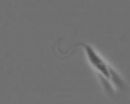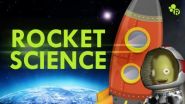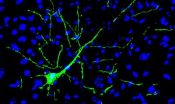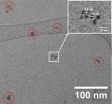New insights into why adolescents carry meningitis-causing bacteria
2014-08-04
(Press-News.org) University of York scientists have shed new light on why teenagers and young adults are particularly susceptible to meningitis and septicaemia.
The team from the University's Department of Biology has discovered a novel metabolic pathway in the bacterium Neisseria meningitidis that may explain why this age group is particularly at risk of infection.
The results of the research, which was supported by the Centre for Chronic Diseases and Disorders (C2D2), are reported in the journal Molecular Microbiology.
N. meningitidis is a major cause of meningitis and septicaemia, and a leading cause of infectious disease among teenagers and young adults. While it is well known that these bacteria are found in large numbers in the upper respiratory tract among adolescents, the reasons for this are unknown.
Lead author Dr James Moir, from York's Department of Biology, said: "We have found that N. meningitidis can supplement its growth via metabolism of the small fatty acid propionic acid. The propionic acid is generated by other, strictly anaerobic bacteria (bacteria that do not need oxygen to live) that become more prevalent in adolescents.
"Through our research, we identify the metabolic pathway responsible and show that there is a correlation between N. meningitidis and propionic acid generating anaerobic bacteria Porphyromonas and Fusobacterium. The anaerobes are acquired gradually with age, peaking in adolescence."
Dr Maria-Chiara Catenazzi, from York's Department of Biology, said: "The capacity of N. meningitidis to colonise adolescents/young adults is important for its transmission and disease epidemiology. This increase in carriage in young adulthood is frequently attributed to increased social interaction and contact in this age group. While this is no doubt true, here we present for the first time a mechanistic explanation for why N. meningitidis carriage varies with age, based on the genetic properties of N. meningitidis and co-colonising microbes in the human host."
INFORMATION:
ELSE PRESS RELEASES FROM THIS DATE:
Researchers find potential new predictor of stress-related illnesses
2014-08-04
SAN ANTONIO (Aug. 2, 2014) ― Scientists studying depression in teens have discovered that subtle changes in a gene can predict how the brain reacts to stress, which can cause such health issues as depression, post-traumatic stress disorder and obesity.
The research, published Aug. 2 in the journal Nature, focuses on two longitudinal studies led by Douglas E. Williamson, Ph.D., from The University of Texas Health Science Center at San Antonio, and Ahmad Hariri, Ph.D., from Duke University. Scientists from Columbia University and the University of Pittsburgh are ...
Key adjustment enables parasite shape-shifting
2014-08-04
VIDEO:
Researchers show that suppressing expression of a key protein causes major changes in the shape of T. brucei (shown here), the parasite that causes African sleeping sickness.
Click here for more information.
Crafty parasites frequently undergo dramatic shape changes during their life cycles that enable them to adapt to different living conditions and thrive. But these transformations might not be as difficult as they appear, according to a study in The Journal of Cell Biology.
African ...
It's not rocket science. Oh wait, it is
2014-08-04
WASHINGTON, August 4, 2014 — This week, Reactions is blasting off with an episode that's all about rockets. Featuring Doane College Postdoctoral Fellow Raychelle Burks, Ph.D., we examine the chemistry of solid and liquid propellants, orbital maneuvering and the "ride-able explosion" that is a rocket launch. You can "launch" the video at: https://www.youtube.com/watch?v=Yqiq2lQrqGI.
INFORMATION:
Subscribe to the series at Reactions YouTube, and follow us on Twitter @ACSreactions to be the first to see our latest videos.
The American Chemical Society is a nonprofit ...
NASA sees Tropical Storm Bertha leaving the Bahamas
2014-08-04
Tropical Storm Bertha took a "vacation" in the Bahamas on August 3 and NASA's Terra satellite captured an image of the storm that appeared be centered over "Crooked Island."
On August 2, before Bertha visited the Bahamas, the western half of the storm passed over Puerto Rico. A visible image captured by NASA's Terra satellite showed Bertha's clouds stretched from Puerto Rico east, over the British Virgin Islands. NOAA's National Weather Service office in San Juan, Puerto Rico reported 1.36 inches of rainfall from Bertha on August 2.
On August 3 at 15:35 UTC (11:35 a.m. ...
New information on transcranial ultrasound therapy
2014-08-04
A recent study completed at the University of Eastern Finland provides new information on the limitations and potential new directions for the future development of transcranial ultrasound therapy. Active research is taking place in the field of transcranial ultrasound therapy, which in the future can potentially be applied to the treatment of brain tumours and targeted drug delivery. The therapy modality has already been successfully applied to the treatment of neuropathic pain disorder and essential tremors. The benefits of transcranial ultrasound therapy include minimal ...
Implanted Neurons become Part of the Brain
2014-08-04
Scientists at the Luxembourg Centre for Systems Biomedicine (LCSB) of the University of Luxembourg have grafted neurons reprogrammed from skin cells into the brains of mice for the first time with long-term stability. Six months after implantation, the neurons had become fully functionally integrated into the brain. This successful, because lastingly stable, implantation of neurons raises hope for future therapies that will replace sick neurons with healthy ones in the brains of Parkinson's disease patients, for example. The Luxembourg researchers published their results ...
Extracting audio from visual information
2014-08-04
Researchers at MIT, Microsoft, and Adobe have developed an algorithm that can reconstruct an audio signal by analyzing minute vibrations of objects depicted in video. In one set of experiments, they were able to recover intelligible speech from the vibrations of a potato-chip bag photographed from 15 feet away through soundproof glass.
In other experiments, they extracted useful audio signals from videos of aluminum foil, the surface of a glass of water, and even the leaves of a potted plant. The researchers will present their findings in a paper at this year's Siggraph, ...
A protecting umbrella against oxygen
2014-08-04
This news release is available in German.
In a paper published this week in the journal Nature Chemistry, researchers from the Center for Electrochemical Sciences – CES at the Ruhr-University Bochum and from the Max-Planck-Institute for Chemical Energy Conversion in Mülheim an der Ruhr report a novel concept to work with efficient and possibly cheaper catalysts. A kind of buffer protects the catalysts against the hostile conditions encountered in fuel cells, which have been to date dismissed utilization. The scientists report in the current issue of Nature Chemistry.
Hydrogenases, ...
Self-assembly of gold nanoparticles into small clusters
2014-08-04
This news release is available in German.
This was determined using Small-Angle X-ray Scattering (SAXS) at BESSY II. A thorough examination with an electron microscope (TEM) confirmed their result. "The research on this phenomenon is now proceeding because we are convinced that such nanoclusters lend themselves as catalysts, whether in fuel cells, in photocatalytic water splitting, or for other important reactions in chemical engineering", explains Dr. Armin Hoell of HZB. The results have just appeared in two peer reviewed international academic journals.
"What ...
Lung cancer diagnosis tool shown to be safe and effective for older patients
2014-08-04
A recent study in Manchester has found that a procedure to take tissue samples from lung cancer patients can be used safely in the elderly – allowing doctors to make a more accurate diagnosis and to choose appropriate treatment.
Half of all lung cancer patients are over 70 years old when first diagnosed, but studies have shown that these older patients are less likely to receive an accurate diagnosis.
A correct assessment of the stage of a patient's disease – how much their tumour has grown and spread – is key to ensuring they receive the right treatment.
Non-invasive ...






